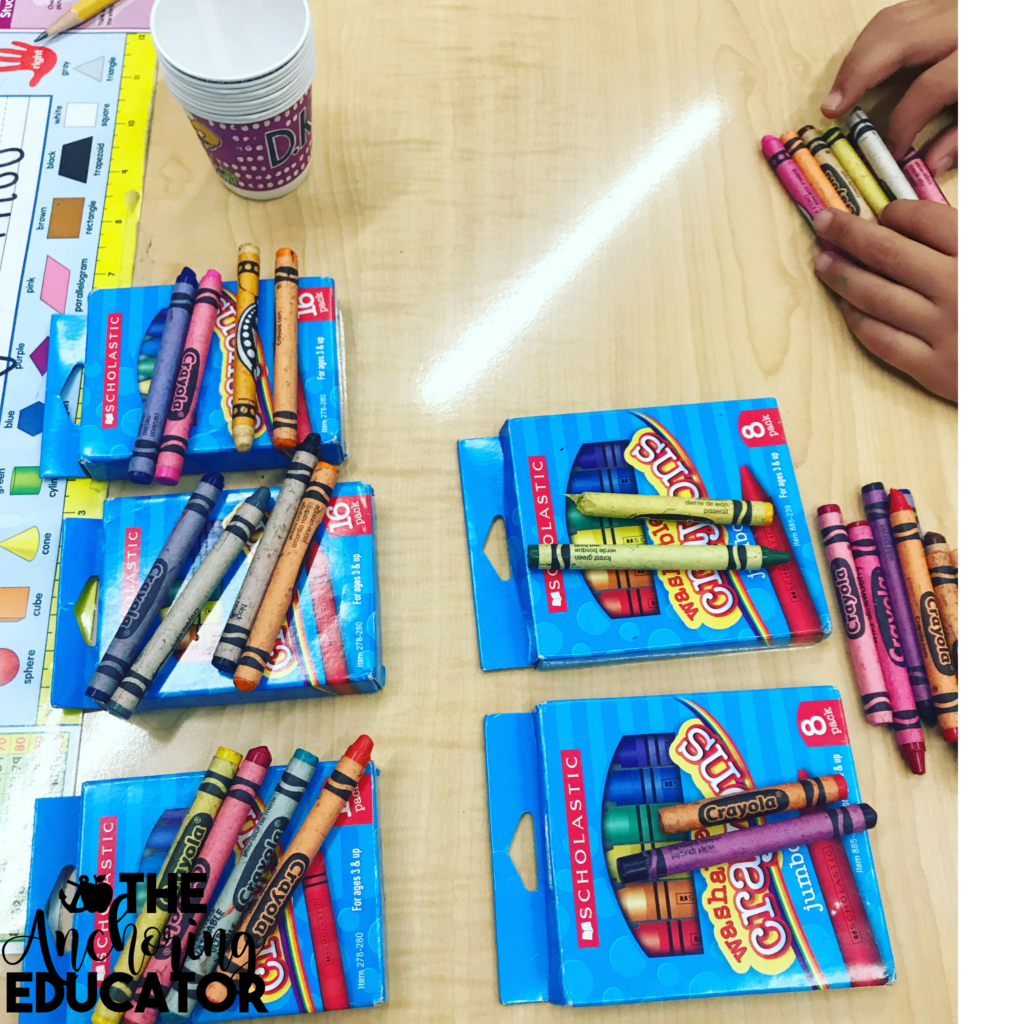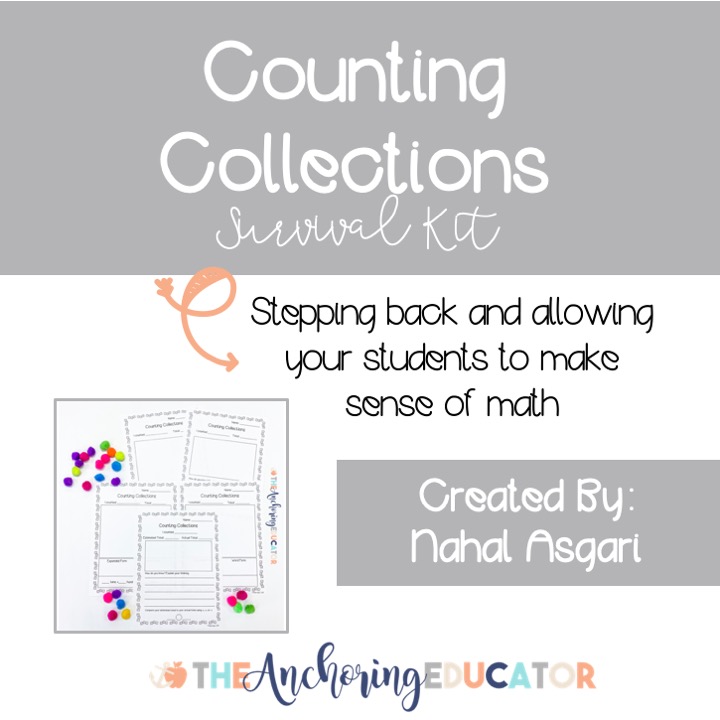I absolutely LOVE building number sense in the primary grades with Counting Collections. Counting Collections is a student-centered activity where students become aware of their mathematical thought processes and gain a strong sense of numerical relationships. It’s perfect for building number sense in preschool-2nd grade. Counting Collections can also be used as an intervention tool for 3rd-5th graders. I began the journey of implementing Counting Collections a handful of years ago. Not only did it push my questioning techniques to better meet the diverse needs of my students, but the students go CRAZY for it! There are so many benefits to bringing this tool into your classroom and I have created a Counting Collections Survival Kit with everything that you need for successful implementation. Now let’s dig into what Counting Collections is all about!
Benefits of Counting Collections
- promotes number sense in young mathematicians by allowing them to develop a deeper understanding of patterns and relationships between numbers
- allows teachers the space to practice questioning strategies that foster higher levels of thinking and processing… hopefully, these questioning techniques transfer into all math blocks
- creates a safe learning space… for everyone
- allows teachers to guide students in their own mathematical thinking, supporting metacognition
- allows students to touch and explore quantities
- gives students ownership over what collection they choose to count and what strategies they will use to navigate the collection
- celebrates a variety of strategies and promotes problem solving skills
- encourages and develops student reasoning and precision
- strengthens mental math
- encourages the use of mathematical language
- builds confidence
- student-centered: fosters independence, accountability and responsibility for learning
- allows students to continue developing their number sense from wherever they are. Some students can be counting all, while others are counting on, grouping, or decomposing and recombining numbers using place value
- supports oral language development
Counting Collections in Action
Counting by 5s

This 1st grade student organized their collection into groups of 5. What’s interesting is that the student could rote count by 5s from 1 to 100, but when the student was counting this collection, the student could only count by 5s until 20 and then counted on by 1s. Counting Collections will allow this student to slowly begin to recognize the patterns when adding 5 or subtracting 5. That’s an example of a student who has memorized how to count by 5s, but has no understanding of what it really means. Counting Collections creates a space that brings awareness to these gaps so that the teacher can fill them.
Sorting by Color

This 1st grade student counted by 1s and organized their counting collection by color. I usually start by asking, “How many do you have?” and “How do you know?” The following questions would be based on what the student said or did. In this case, I might ask, “How did you organize your collection?” and “Why did you decide to organize it that way? How is it helping your counting?” Sticking to “how…” and “why…” questions instead of “did you…” and “can you….” questions is key.
Counting by 1s

This 1st grade student counted all. Each time the student said a number, he touched the object with the pencil. This tells us that the student has one to one correspondence. As teachers, we can see that right away. However, I would still go on to ask the student, “Why did you touch each alien with your pencil as you were counting?” The goal is for the students to be aware of the moves they are making as mathematicians to help them be successful. Our goal is to promote metacognition.
Using Place Value to Mentally Add

This 1st grade student was an exciting one! This student was counting all and was stuck on how to add the pre-packed crayons after they had already counted all of the single crayons. Pre-packaged collections are used when you would like to push your students to use mental math when decomposing and recombining numbers using place value. Through effective questioning, the student began to see that they needed to begin with the pre-packaged collections. The student knew how to count by tens, so they decided to make tens with each package. Finally, the student also grouped the leftover ones into groups of tens.
Mastering Differentiation in Counting Collections: Levels of Understanding
As you can see from the photos above, there is a wide range of understanding and skill within one grade level. Counting Collections allows you to meet the needs of individual students so that they build a solid number sense without a ton of misconceptions and gaps that usually develop when students only learn mathematics procedurally. However, if these gaps and misconceptions are already present in student learning, Counting Collections allows opportunities to fill them.
The ultimate goal is for students to be aware of why they are making certain mathematical moves, to explain their thinking, and to see the patterns and relationships between numbers.
Using Recording Sheets

This Kinder student initially counted:
1,2,3…4,5,6…7,8,9…10,11,12…13,14,15 and within a couple weeks counted: 3,6,9,12,15!!

In 3rd grade, students estimated their collection, counted it, recorded their strategy, explained their thinking in writing, then compared their estimate to the actual answer. This recording sheet is included in my Counting Collections Survival Kit.



Getting Started
All you need to get started are some collections and a dedicated time during your day to implement. I recommend at least 3-5 times per week to see great growth in number sense! If you need more support, check out my Counting Collections Survival Kit on TPT, which includes Q&A, collection ideas, sample expectations chart, sample questions, anecdotal notes template with list of student strategies for quick check, individual/partner recording templates (K-3), a stamina chart and sentence starters. It has everything you need, and more, to implement counting collections successfully! You can also purchase only the Counting Collections Recording Sheets.

Need additional help with classroom management? Check out this blog post for a simple and effective way to support your students in working independently and in pairs. Scroll to the bottom of the post for a link to a free resource!
Let me know in the comments if you’ve already implemented counting collections, are thinking about it, or have absolutely any additional questions!
Enjoy the journey!!
